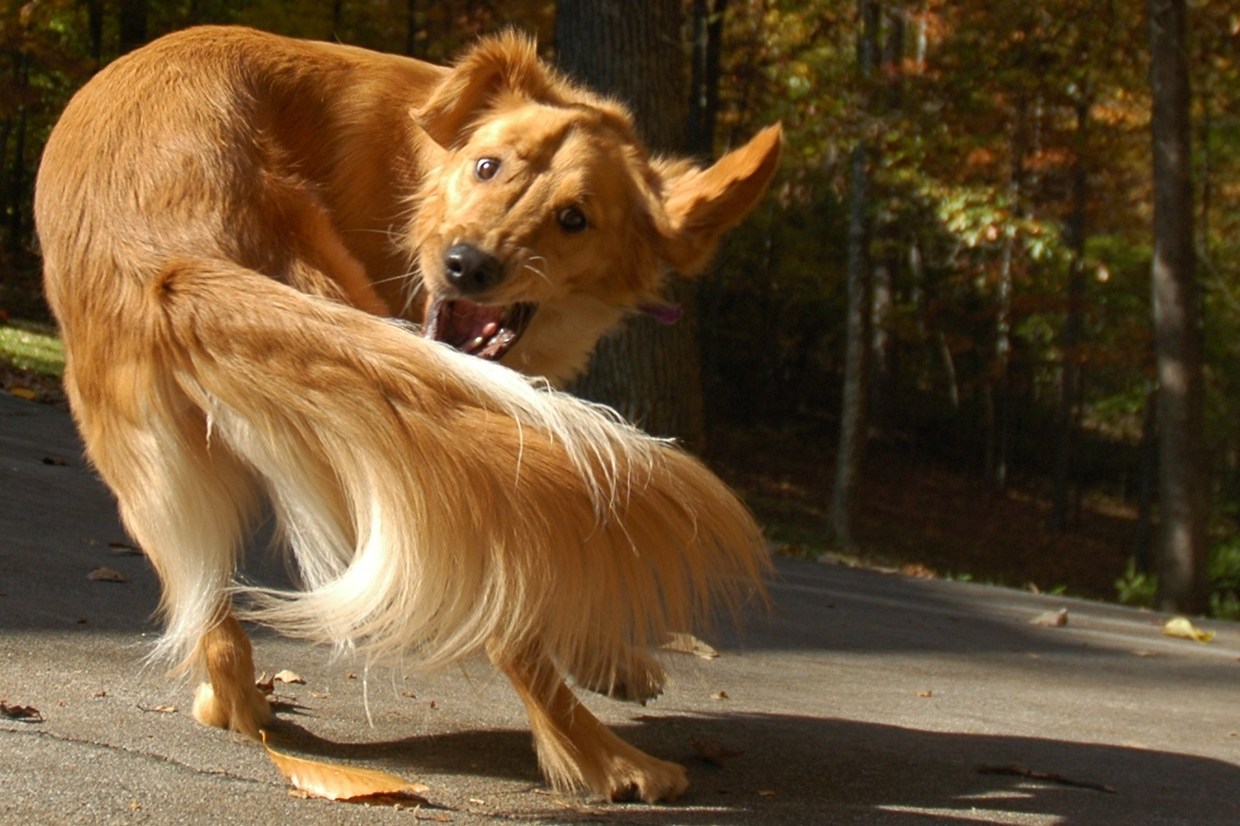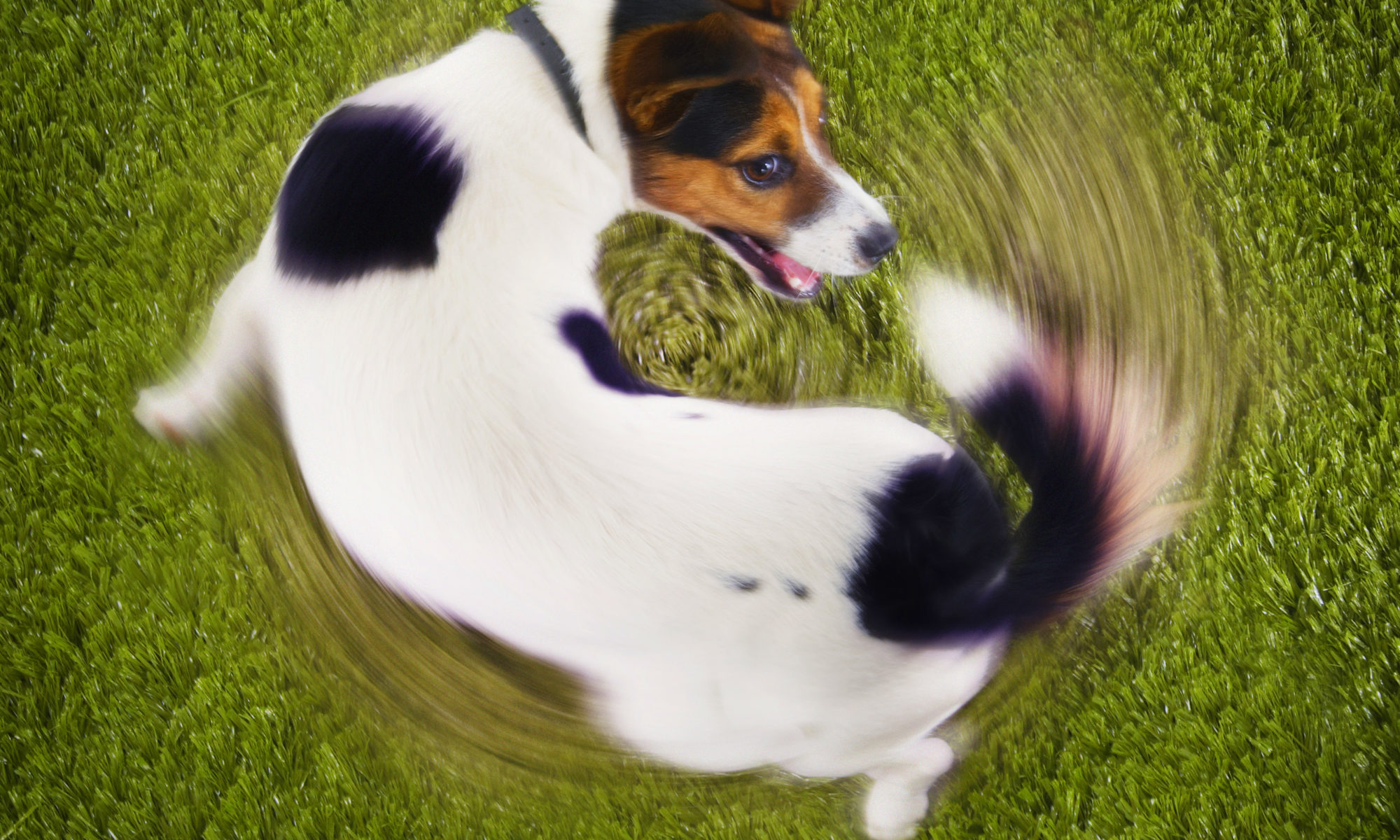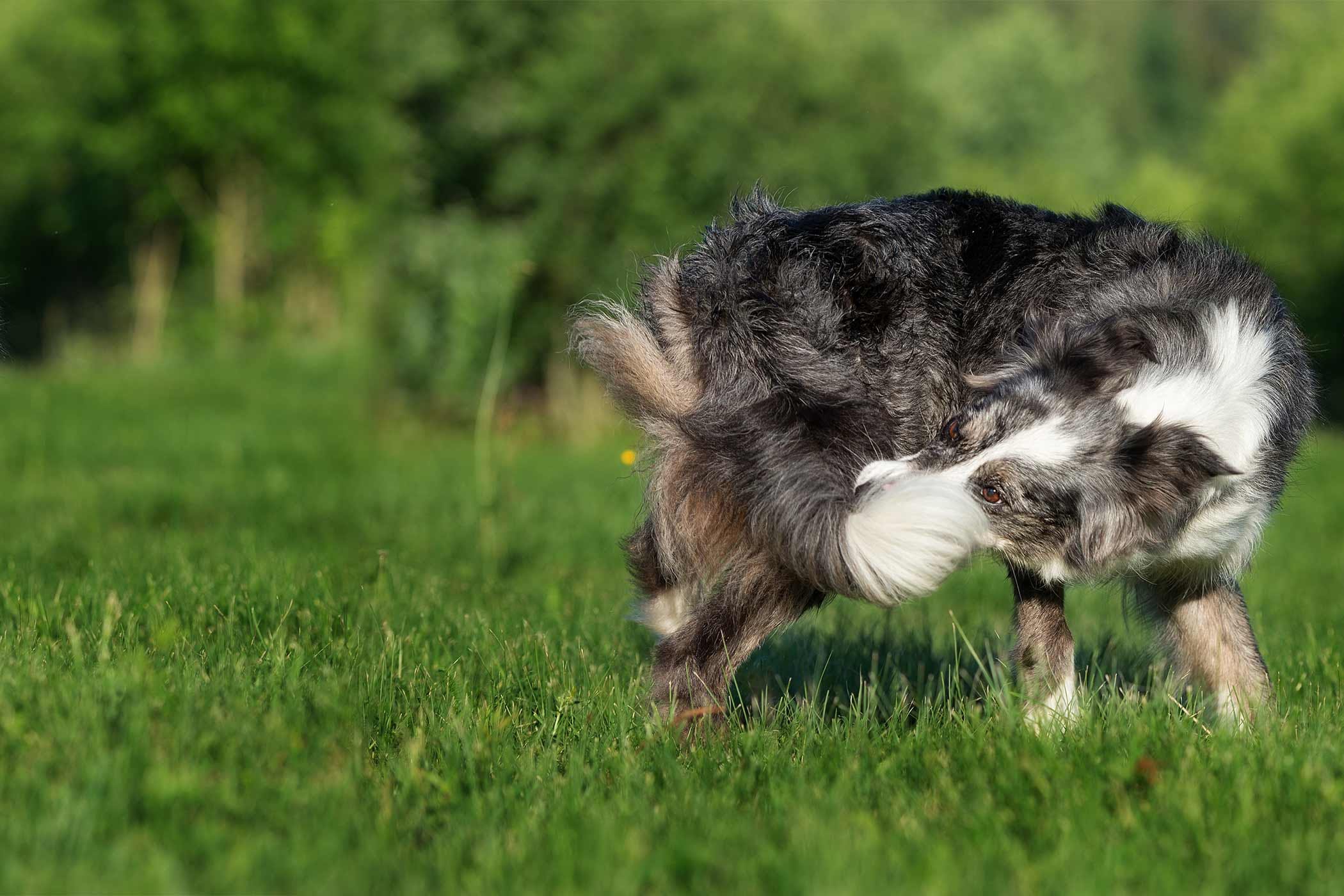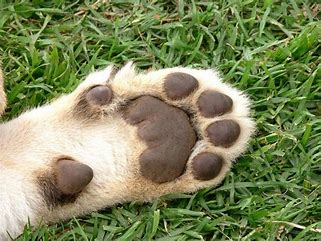Most dogs occasionally chase or nip at their tails out of curiosity or excitement. However, some dogs bite and chew their tails incessantly, causing hair loss and even bleeding. This troubling condition indicates underlying physical or psychological issues requiring veterinary attention. This article explores the potential causes and solutions for chronic, damaging tail chewing in dogs.
Anxiety, Stress and Conflict
Like in humans, anxiety in dogs can manifest in repetitive, compulsive behaviors that seem irrational to us. This includes tail chasing, biting, or chewing that serves as a coping mechanism for the dog. Triggers provoking this harmful reaction can include:
- Tension or instability in the home
- Introduction of a new pet or family member
- Loud noises like thunderstorms or fireworks
- Travel or changes in schedule
- Social isolation or confinement
After ensuring no medical factor, addressing the source of the dog’s stress and enriching their environment with more toys, exercise and affection will help ease anxiety-driven tail injuries.

Boredom and Lack of Stimulation
Dogs with abundant energy and intelligence need sufficient daily physical and mental exercise. Without adequate outlets, they turn to inappropriate activities like destructive chewing or tail biting from boredom and frustration. This often arises when active, working breeds don’t get the stimulation they need.
Preventing boredom-induced tail injuries involves providing interactive toys, food puzzles, daily training sessions, and at least an hour of vigorous exercise like running or swimming. Daycare a few days a week also helps high-energy dogs.
Obsessive Compulsive Disorder
Repetitive tail chasing or biting may reflect an obsessive compulsive disorder. Like anxiety, OCD results in repetitive behaviors that provide temporary stress relief. The underlying motivation differs however. Medical issues like thyroid disease can trigger OCD tendencies.
Along with medication from their vet, dogs with OCD benefit from lifestyle changes to reduce stress and regular mental stimulation. The key is interrupting the obsessive pattern and redirecting the dog’s focus.
Itchiness and Discomfort
Dogs may bite or lick at their tail area simply because it itches or feels irritated. Common causes of tail discomfort include:
- Flea allergy dermatitis
- Food allergies
- Contact dermatitis
- Impacted anal glands
- Worms or skin infections
Treatment involves addressing the source of irritation and using medications and supplements to relieve itchiness. Preventing tail chewing requires identifying and resolving the skin problem.

Neurological Disorders
Conditions affecting the nervous system, like seizures or neuropathy from diabetes or Cushing’s disease, may provoke tail chasing or biting behaviors. The dog lacks control over the actions, which can seem compulsory. Diagnostic testing like bloodwork, urinalysis and neurological exams will uncover any underlying disorder.
Trauma or Injury
Direct trauma to the tail, such as bites, accidental closing in doors, or blunt force injury can cause lasting pain and irritation. Dogs may bite at sore tails in an attempt to relieve discomfort. Careful examination and x-rays determine if bone fractures or dislocations are present. Restricting tail movement allows proper healing.
Behavioral Therapy
For chronic tail injuries related to stress, boredom or compulsions, behavior therapy assists in breaking the destructive chewing habit. Trainers use techniques like distraction, remote correction collars and positive reinforcement of alternate calm behaviors. Medical solutions may supplement therapy.
Conclusion
While the occasional tail nibble is normal, recurrent chewing and biting causing hair loss or bleeding requires prompt veterinary attention. A combination of medication, behavioral modification, environmental enrichment and stress reduction helps resolve the underlying source of tail-directed behavior. Patience, discipline and strategic use of collars or bandages will curb this harmful obsessive habit. With diligent effort by owners, dogs can stop injuring their tails and resume being happy and well-adjusted canine companions.


